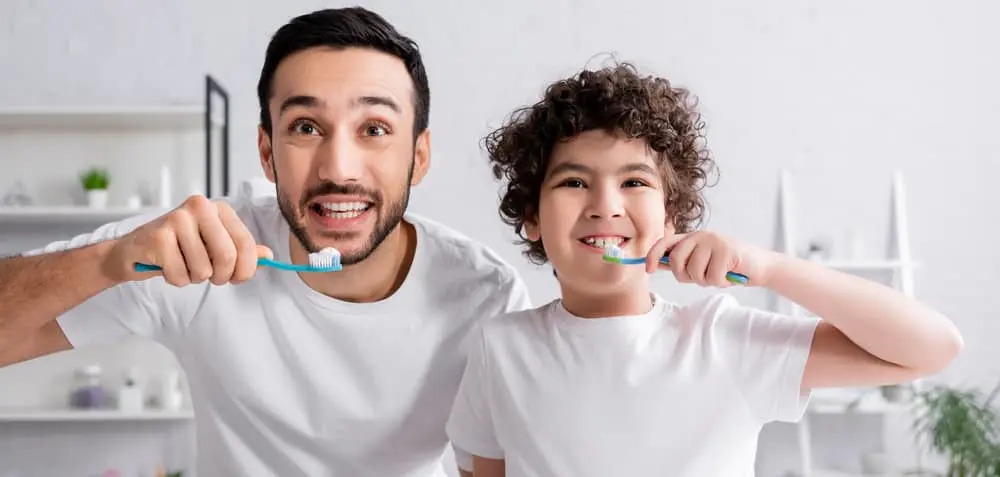Each time you consume food or fluids, it's possible that part of it will stick to your teeth and gums. A sticky film of bacteria is called plaque. Leaving it on the teeth for too long causes it to calcify. Calculus is the name given to the firmly adhered plaque that is difficult to remove with a toothbrush. If left unattended, bacteria that cause calculus, create cavities, erode enamel, and tunnel through the tooth toward the nerve and jaw bone can cause infection. Following then, bacteria might go to many parts of your body, including the brain, heart, and lungs1.
Additionally, gum inflammation and infection brought on by plaque bacteria can injure the jaw bone, ligaments holding the teeth in place, and gum tissue, which can result in tooth loss2. Given all of these factors, it shouldn't be surprising that poor dental health is associated with conditions including pneumonia, high blood pressure, heart disease, diabetes, rheumatoid arthritis, and osteoporosis3.
To avoid all the negative consequences that come with poor dental hygiene, it is essential to know the right manner in which teeth need to be brushed. So, here is a rundown on how to brush your teeth:
Steps to brushing your teeth:
Select the right equipment
It's crucial that you pick high-quality goods that meet your demands for oral health, from floss and mouthwash to toothbrushes and toothpaste. The following advice will help you select the best toothbrush:
Choose the bristles based on the condition of your gums. You will require soft, non-irritating bristles if your gums are sensitive. If you don't have gum problems, using a medium bristle brush is appropriate.
Replace your toothbrush on a regular basis. If your teeth don't feel clean after brushing or if the bristles are no longer upright and fanning out.
For the right toothpaste or mouthwash, choose the ones that are right for you and for your dental needs. For instance, ask yourself these questions before you go on your next toothpaste/mouthwash purchase: Are you experiencing xerostomia (dry mouth) or halitosis (bad breath)? Are you susceptible to gingivitis? Do you have healthy teeth? Do your gums or teeth feel sensitive?
Use the right brushing technique4
Follow these simple steps to ensure that you are brushing your teeth appropriately:
Brush your teeth for two minutes using fluoride toothpaste.
Each of the upper left, upper right, bottom left, and lower right teeth should receive 30 seconds of attention.
Pay attention to how the brush is positioned. The bristles should be angled toward the gums, which meet the teeth where plaque and calculus are prone to forming. In other words, rather than being perpendicular to your teeth at a 90-degree angle, the bristles should be inclined at a 45-degree angle.
Make circles with the bristles: Gently sweeping the bristles in a circular motion will help to capture dirt that is close to the gum line.
Take good care of your teeth. If you brush too forcefully, your gums may get sore and potentially even pain. Furthermore, brush your tongue. It collects a ton of bacteria, which needs to be brushed off.
Clean your mouth and toothbrush with water. Water should be used to wash away any toothpaste and food stains.
Check your teeth and gums for conditions. After brushing your teeth, pull your lips away to examine for any food fragments that may have remained. It shouldn't look red or puffy on your gums.
You would need to repeat this technique twice daily.
Your dental care routine does not stop here!
Brushing your teeth alone is not enough. You need to remember to floss and use mouthwash, too. To floss your teeth, here is what you need to do:
Snip a section of dental floss. To hold the floss securely, wrap the majority of it around both of your middle fingers. You should only save 3 to 5 cm of floss for your teeth.
Next, hold the floss taut with your thumbs and index fingers.
Insert the dental floss in the spaces between two teeth. Gently touch each tooth's surface on both sides with the floss as you move it up and down. Avoid letting the floss touch your gums. This might graze or damage your gums.
When the floss reaches your gums, bend it into a C shape at the tooth's base. The floss can then get to the space between your gums and teeth by doing this.
To use mouthwash, here is what you need to do:
Fill a cup with 20 milliliters (4 tablespoons) of Listerine® mouthwash.
Fill your mouth with the contents of the cup. Don't add water to the solution to dilute it.
Swish for the whole 30 seconds (you can use a stopwatch or mentally count to 30). If you can't reach 30 seconds the first time, do not worry as it becomes simpler each time.
Gargle in the mouthwash in your mouth.
Spit the mouthwash into the sink.
In conclusion, maintaining good dental hygiene is essential for having healthy teeth and gums. This entails using proper flossing and brushing techniques each day. Additionally, you ought to use mouthwash such as Listerine®. Remember to go to the dentist regularly for cleanings and examinations of your teeth. Preventative dentistry is your greatest bet for a lovely smile and lasting oral health!
